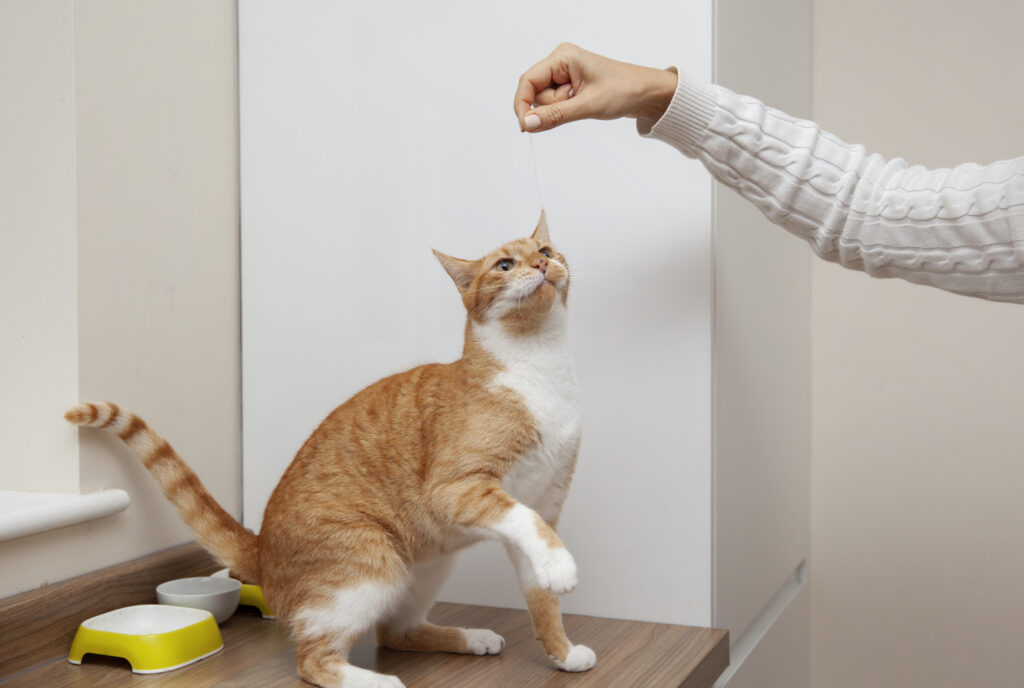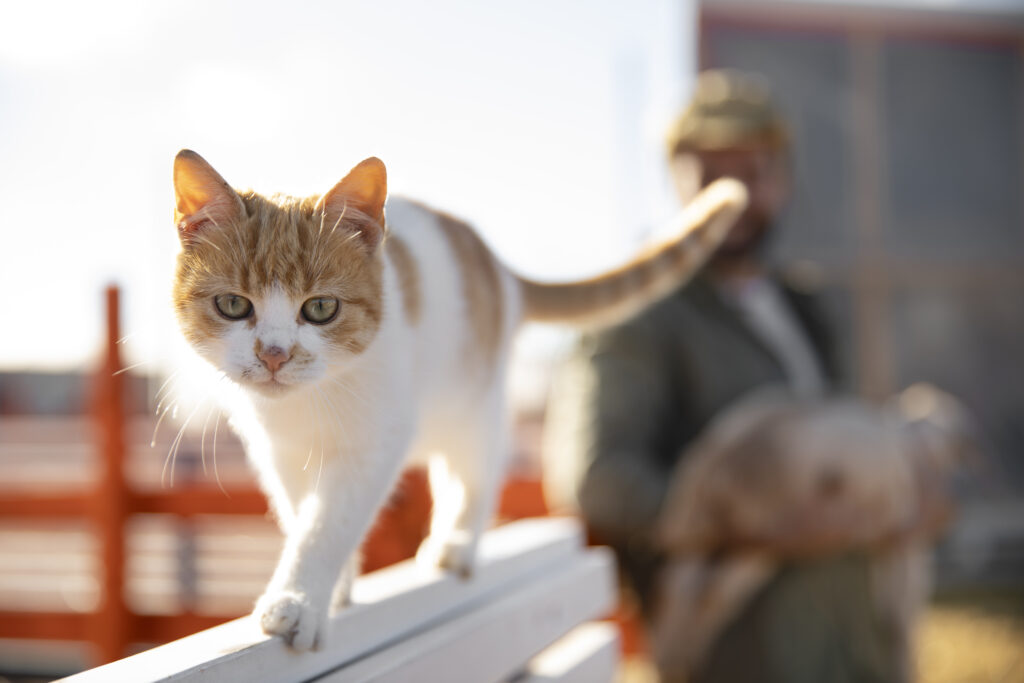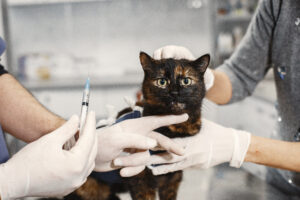Introduction
The decision to adopt a cat is life-changing—both for you and your future feline companion. As you embark on this guide to adopting a cat, it’s crucial to understand that bringing a new pet home involves much more than just picking the cutest kitten at the shelter.
Whether you’re adopting a cat for the first time or adding another furry friend to your family, avoiding common pitfalls can make the transition smoother and create a foundation for a beautiful relationship that lasts for years to come. This comprehensive cat adoption checklist will walk you through everything you need to know before bringing your new companion home.
Many prospective pet parents make serious mistakes during the cat adoption process—errors that can lead to stress, behavioral issues, and even failed adoptions. In this article, we’ll explore four shocking mistakes people make when adopting a cat and provide practical advice on how to avoid them. By understanding these pitfalls and following our expert steps to adopt a cat, you’ll set yourself and your new furry family member up for success.
Whether you’re considering adopting a rescue cat from a shelter or looking into other options, this guide will help you navigate the process with confidence and care. Let’s dive into the most important things to know before adopting a cat so you can create a forever home that’s perfect for both of you.

Mistake #1: Impulse Adoption Without Proper Preparation
One of the most common and potentially devastating mistakes in the cat adoption journey is making an impulsive decision without adequate preparation. The sight of adorable kittens can trigger emotional responses that cloud judgment, leading to adoptions that aren’t well thought out.
Why Preparation Matters
When adopting a cat, preparation isn’t just about buying food bowls and litter boxes. It involves:
- Long-term commitment assessment: Cats can live 15-20 years, requiring your dedication throughout their lifespan
- Lifestyle compatibility evaluation: Understanding how a cat will fit into your daily routine
- Financial planning: Being ready for both routine and emergency veterinary care
- Home environment preparation: Creating a safe, enriching space for your new companion
How to Prepare for a Cat Before Adoption
Before adopting a cat for the first time, follow these preparation steps:
- Research cat breeds and personalities: Different cats have different needs and temperaments. Research breeds or, for mixed-breed shelter cats, learn about personality traits to find a good match.
- Create a budget: The cost of adopting a cat goes beyond the initial adoption fee. Budget for:
- Food (premium quality)
- Regular veterinary check-ups
- Vaccinations
- Preventative medications
- Emergency care fund
- Toys and enrichment
- Litter and supplies
- Cat-proof your home: Before bringing a new cat home, ensure your living space is safe by:
- Removing toxic plants (lilies, tulips, azaleas)
- Securing loose wires and cords
- Removing small objects that could be swallowed
- Checking for hiding spots where a cat might get stuck
- Installing secure window screens
- Gather essential supplies: Your cat adoption checklist should include:
- High-quality food appropriate for age and health needs
- Food and water bowls (preferably stainless steel)
- Litter box and litter (one more box than the number of cats)
- Scratching posts and pads
- Comfortable bed
- Carrier for transportation
- Interactive toys
- Grooming supplies
According to a study by the ASPCA, proper preparation can significantly reduce adoption returns and increase successful bonding between cats and their new families. Taking time to prepare is one of the most important steps to adopt a cat successfully.
Mistake #2: Ignoring the Cat’s Background and Specific Needs
Another critical mistake when adopting a cat is failing to consider the animal’s history, temperament, and specific needs. Each cat is an individual with unique experiences that shape their behavior and requirements.
Understanding Cat Backgrounds
When adopting a rescue cat, it’s essential to learn as much as possible about their previous living situation:
- Were they surrendered, stray, or born in the shelter?
- Have they lived with other animals or children?
- Do they have any known behavioral issues or triggers?
- What kind of environment makes them comfortable?
Special Considerations for Different Cats
When Adopting a Kitten
If you’re focused on how to adopt a kitten, remember they require:
- More frequent feeding schedules
- Consistent litter training
- Extra supervision to prevent accidents
- Appropriate socialization during critical developmental periods
- Higher energy levels and more interactive playtime
According to Cornell University’s College of Veterinary Medicine, the first 2-7 weeks of a kitten’s life are crucial for socialization, affecting their lifelong temperament.
When Adopting Adult or Senior Cats
Adult and senior cats often make wonderful companions but may have specific needs:
- Established personalities (what you see is usually what you get)
- Possible health conditions requiring management
- Previous experiences that affect behavior
- Shorter adjustment periods in some cases
- Lower energy requirements than kittens
Questions to Ask Before Adopting a Cat

When visiting shelters or rescues, ask these important questions before adopting a cat:
- What is this cat’s history and personality?
- How does the cat interact with other animals?
- Are there any known health issues?
- What is their energy level and play style?
- Do they have any specific triggers or fears?
- How do they respond to handling?
- What diet have they been on?
- Are they litterbox trained and consistent?
A study published in the Journal of Veterinary Behavior found that matching a cat’s personality and needs with an appropriate home environment significantly reduces behavioral problems and increases adoption success rates.
Mistake #3: Underestimating the Commitment and Costs
Many first-time cat owners are shocked by the true commitment and cost of adopting a cat. Underestimating these factors can lead to financial strain and, in worst cases, surrendering the pet back to a shelter.
The Real Cost of Cat Ownership
The initial adoption fee is just the beginning when adopting a cat. According to the American Pet Products Association, cat owners spend an average of $1,100-$1,500 per year on their feline companions, including:
- Food: $200-$600 annually (depending on quality)
- Routine veterinary care: $200-$400 annually
- Litter and supplies: $200-$250 annually
- Toys and enrichment: $50-$100 annually
- Preventative medications: $100-$200 annually
- Emergency care fund: Recommended $500-$1,000 set aside
Time Commitment Considerations
When adopting a cat for the first time, consider the daily and long-term time investments:
- Daily feeding and fresh water provision
- Litter box cleaning (at least once daily)
- Interactive play sessions (15-30 minutes, multiple times daily)
- Grooming, especially for long-haired breeds
- Regular veterinary visits
- Environmental enrichment and attention
- Training and behavior management
Long-Term Planning for Cat Adoption
Before adopting a cat, consider these long-term factors:
- Lifespan: Cats typically live 12-20 years, requiring a decade-plus commitment
- Life changes: How will future moves, relationship changes, or family additions affect your cat?
- Travel arrangements: Who will care for your cat when you’re away?
- Housing restrictions: Are you in stable housing that allows pets long-term?
Dr. Emily Weiss, Vice President of Research & Development at the ASPCA, notes: “Many adopters underestimate the lifetime commitment of adopting a cat. Understanding and planning for the full scope of care—emotional, physical, and financial—is crucial for successful adoptions.”
Mistake #4: Rushing the Adjustment Period
Perhaps the most overlooked aspect of adopting a cat is not allowing sufficient time and space for adjustment. Many new cat owners expect immediate affection and perfect behavior, leading to disappointment and frustration for both human and feline.
Understanding Cat Adjustment Timelines
How long does it take to adopt a cat fully into your home? The adjustment period varies widely:
- Kittens may adapt within a few days to weeks
- Adult cats typically need 2-6 weeks to feel comfortable
- Cats with trauma histories may need months or even a year to fully adjust
- Multiple-cat households require careful, gradual introductions over weeks
Creating a Smooth Transition When Bringing a New Cat Home
Follow these essential steps to adopt a cat successfully into your home environment:
- Start small: Confine your new cat to a quiet room with all necessities (food, water, litter, bed) for the first few days.
- Respect their space: Allow the cat to approach you rather than forcing interaction.
- Establish routine: Cats thrive on predictability—feed, play, and interact at consistent times.
- Introduce scents first: Before face-to-face introductions with other pets, exchange bedding to familiarize animals with each other’s scents.
- Use positive reinforcement: Reward calm behavior and positive interactions with treats and praise.
- Expand territory gradually: Once comfortable in their safe room, allow exploration of additional spaces in your home.
According to The Humane Society of the United States, rushing this adjustment period is one of the most common mistakes when adopting a cat.
Signs Your Cat Is Adjusting Well
Look for these positive indicators when bringing a new cat home:
- Eating, drinking, and using the litter box regularly
- Grooming themselves
- Exploring their environment with confidence
- Seeking interaction and affection
- Playing with toys
- Sleeping in open, vulnerable positions
Comprehensive Cat Adoption Checklist
To ensure you’re fully prepared when adopting a cat, use this detailed cat adoption checklist:
Before Adoption:
- ✓ Research and understand the commitment of cat ownership
- ✓ Budget for short and long-term expenses
- ✓ Ensure your living situation allows pets
- ✓ Cat-proof your home
- ✓ Purchase essential supplies
- ✓ Find a veterinarian
- ✓ Research local shelters and rescue organizations
- ✓ Consider the best age to adopt a cat for your lifestyle
During Adoption:
- ✓ Ask detailed questions before adopting a cat
- ✓ Spend time interacting with potential cats
- ✓ Consider personality compatibility over appearance
- ✓ Complete all paperwork thoroughly
- ✓ Get medical records and history
- ✓ Understand the return policy (if needed)
After Adoption:
- ✓ Schedule a veterinary check-up within the first week
- ✓ Keep the environment calm and consistent
- ✓ Follow the shelter’s feeding recommendations initially
- ✓ Monitor eating, drinking, and litter box use
- ✓ Introduce family members and other pets gradually
- ✓ Allow adjustment time without pressure
- ✓ Establish consistent routines
Tips for First-Time Cat Owners
If you’re adopting a cat for the first time, these first time cat owner tips will help you navigate the early days:
- Expect hiding behavior: Many cats hide for days after arrival—this is normal!
- Respect boundaries: Let your cat set the pace for interaction.
- Learn body language: Understand the basics of cat communication to prevent misunderstandings.
- Create vertical space: Cats feel secure when they can access high perches.
- Provide scratching outlets: Protect your furniture by providing appropriate scratching surfaces.
- Consider food puzzles: These enrich your cat’s environment and provide mental stimulation.
- Be patient with litterbox issues: Stress can cause temporary lapses; consistency is key.
- Establish a relationship with a veterinarian: Regular check-ups prevent many common health issues.
According to The Indoor Pet Initiative at Ohio State University, enrichment and understanding feline needs are crucial aspects of cat adoption tips that promote well-adjusted, happy cats.
Adopting a Cat vs Kitten: Which Is Right for You?
One important decision in the cat adoption process is choosing between a kitten and an adult cat. Consider these factors when adopting a cat vs kitten:
Kitten Adoption Considerations:
- Energy level: Extremely high, requiring significant play and supervision
- Personality: Still developing and may change with maturity
- Training needs: Requires consistent guidance for litter box use and appropriate play
- Time commitment: Higher, especially in the first year
- Compatibility: May be overwhelming for senior citizens or very young children
- Lifespan commitment: 15-20 years on average
Adult Cat Adoption Considerations:
- Energy level: Generally more moderate and predictable
- Personality: Usually established and evident during adoption
- Training needs: Often already litter trained and socialized
- Time commitment: Moderate, with fewer developmental challenges
- Compatibility: Can be matched to specific household needs
- Health history: Often more information available
- Lifespan commitment: Still substantial but shorter than kittens
Dr. Karen Becker, DVM, notes: “Adopting a rescue cat that’s already an adult often means you’re getting a pet whose personality is already established. This can be ideal for families who want to know exactly what they’re bringing into their home.”
Preparing Your Home for a Cat
Preparing your home for a cat involves more than just buying supplies—it requires creating an environment where your new companion can thrive physically and emotionally.
Essential Home Preparation Steps:
- Create safe spaces: Provide hiding spots, perches, and quiet areas where your cat can retreat.
- Remove hazards: Secure or remove:
- Toxic plants
- Dangerous chemicals
- Small choking hazards
- Dangling cords and strings
- Unstable furniture that could topple
- Set up feeding stations: Place food and water in quiet, low-traffic areas away from litter boxes.
- Position litter boxes strategically: Follow the “one more than the number of cats” rule, placing boxes in quiet, accessible locations.
- Install scratching options: Provide both horizontal and vertical scratching surfaces.
- Create vertical territory: Cats feel secure when they can access different heights—consider cat trees, shelves, or window perches.
- Establish boundaries: Decide which areas will be off-limits and prepare methods to reinforce these boundaries.
According to International Cat Care, proper home preparation is one of the most important steps to adopt a cat successfully.
Understanding the Cat Adoption Process
The practical aspects of how to adopt a cat from shelters or rescues can vary, but most follow a similar framework:
Typical Adoption Process Steps:
- Application submission: Complete a detailed questionnaire about your living situation, experience, and expectations.
- Screening interview: Many organizations conduct phone or in-person interviews to ensure good matches.
- Home check: Some rescues require a home visit to verify the environment is suitable.
- Meet and greet: Spend time interacting with potential cats to assess compatibility.
- Adoption fee payment: Fees typically range from $50-$200, usually covering initial veterinary care.
- Contract signing: Review and sign an adoption agreement outlining your responsibilities.
- Take-home preparation: Receive instructions for transitioning your new cat home.
The cost of adopting a cat from shelters typically includes spay/neuter surgery, initial vaccinations, microchipping, and sometimes a veterinary wellness check, making it an excellent value compared to the retail cost of these services.
Resources for New Cat Parents
Successful cat adoption continues long after bringing a new cat home. These trusted resources can help guide your journey:
- American Association of Feline Practitioners – Expert guidance on cat health and behavior
- Jackson Galaxy – Cat behaviorist with extensive resources for cat parents
- Cornell Feline Health Center – Research-based information on cat health
- Petspump – Comprehensive guides on all aspects of pet care, including specific articles on cat behavior and health
- The Conscious Cat – Holistic cat care information
- Catster – Practical advice for everyday cat care challenges
Conclusion
Adopting a cat is a rewarding journey that brings companionship, joy, and love into your home—but it also brings responsibility. By avoiding these four shocking mistakes—impulse adoption without preparation, ignoring a cat’s background and needs, underestimating commitment and costs, and rushing the adjustment period—you’ll set the foundation for a successful adoption experience.
Remember that each cat adoption is unique, just as each cat is an individual with distinct needs and personality traits. Taking the time to follow a thorough cat adoption checklist, understanding what to do when adopting a cat, and preparing both physically and emotionally for your new family member will make the transition smoother for everyone involved.
Whether you’re adopting a rescue cat from a shelter, adopting a cat for the first time, or adding another feline to your household, patience and preparation are your best tools. The time and effort you invest in the early stages of adopting a cat will pay dividends in the form of a well-adjusted, happy companion who enhances your life for years to come.
For more detailed pet adoption guides and first time cat owner tips, visit Petspump for comprehensive resources on cat care, behavior, and health. Your journey in adopting a cat is just beginning—embrace it with knowledge, patience, and love.






